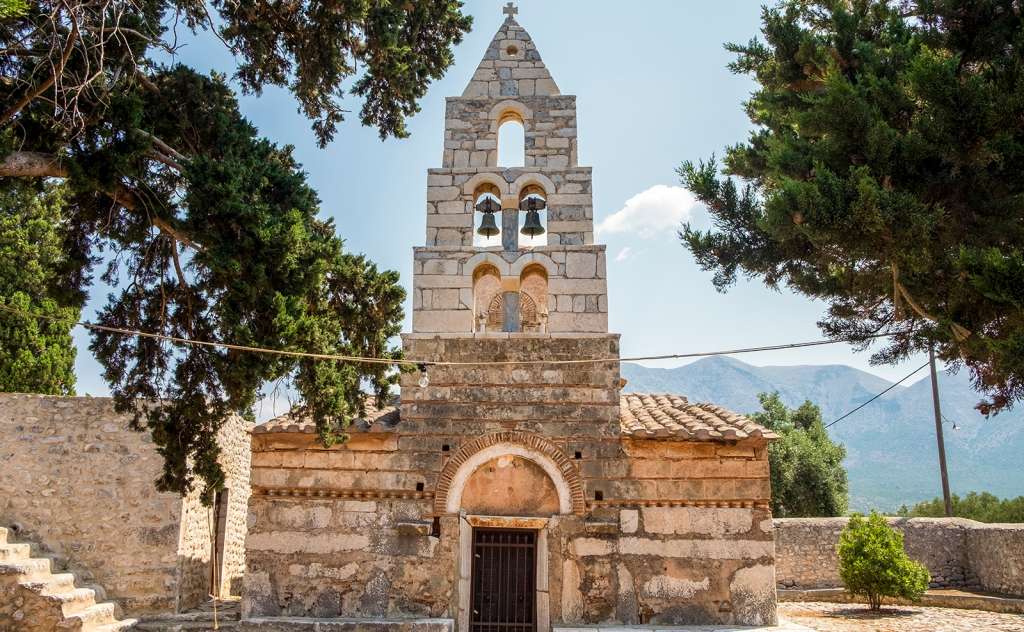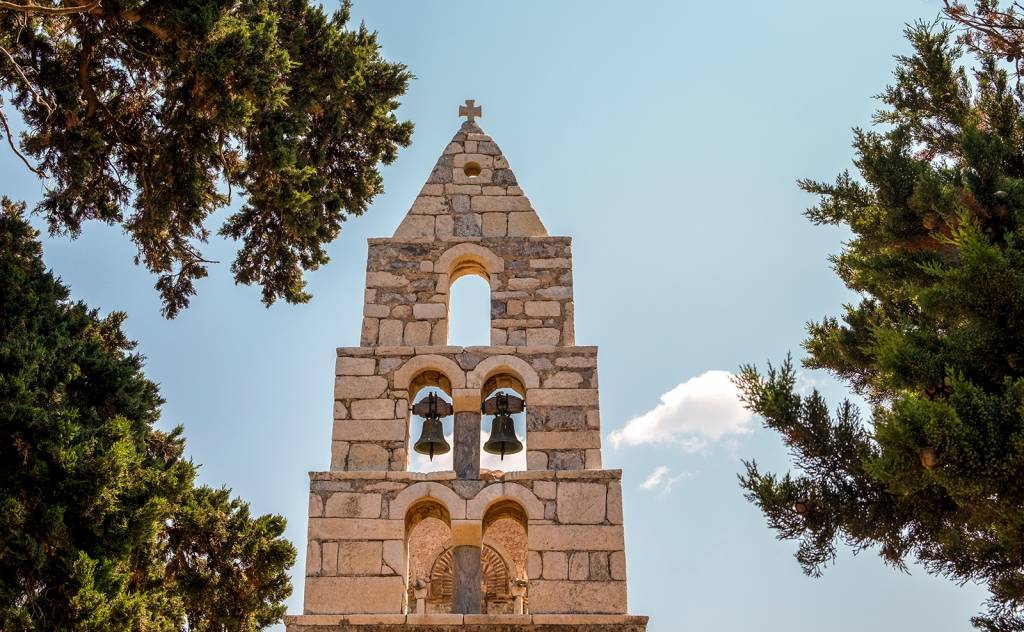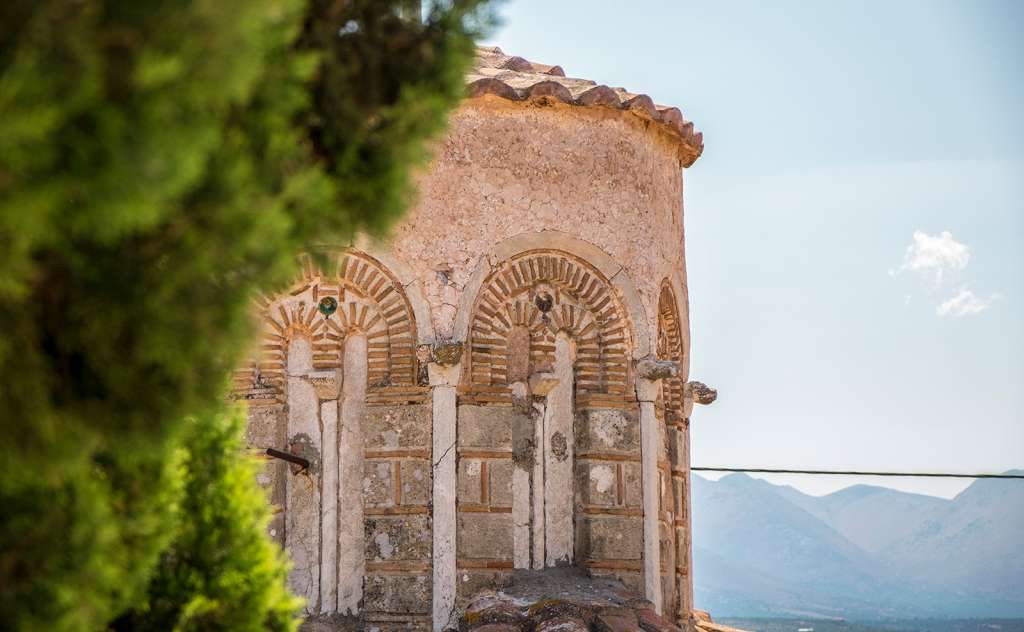Church of Taxiarches
The Byzantine church of Taxiarches is located at the end of the settlement of Charouda. It is a temple of exceptional architecture and exterior decoration. It is one of the cruciform with a dome style churches, with a multi-storey, pointed bell tower which dates back to the 11th century.
According to tradition, the temple was built by a master builder and his master builder son. The two competed for the best result. The father took over the temple of Taxiarchis of Glezos and the son took over the temple of Taxiarchis of Charouda. After the completion of the churches, the judges gave the victory to the son. The father, recognizing that his son had overtaken him, is said to have died of grief as he was leaving the area.
In the dome and the arch of the alter of the church there are built-in dishes, while on the east side there is an inverted marble burial slab with a couplet, ancient inscription. The frescoes of the church are post-Byzantine and date back to the 18th and 19th centuries. The depiction of Virgin Mary with her hair loose, mourning in one aspect, stands out. On the east side of the temple, the visitor can see the entablature with a depiction of a centaur aiming an animal with his arrow, while the door and windows are decorated with intricately carved marble. The sight of the visitor is attracted by a sign hung on one of the pillars of the church. It is located there to remind the people of the village the Charoudians from Lowell, Massachusetts, who in 1905 offered money for the fencing of the church area. Finally, in the courtyard of the temple, the huge rock that is there, “houses”, in its natural concavity, one of the largest rainwater tanks in the whole of Mani.







